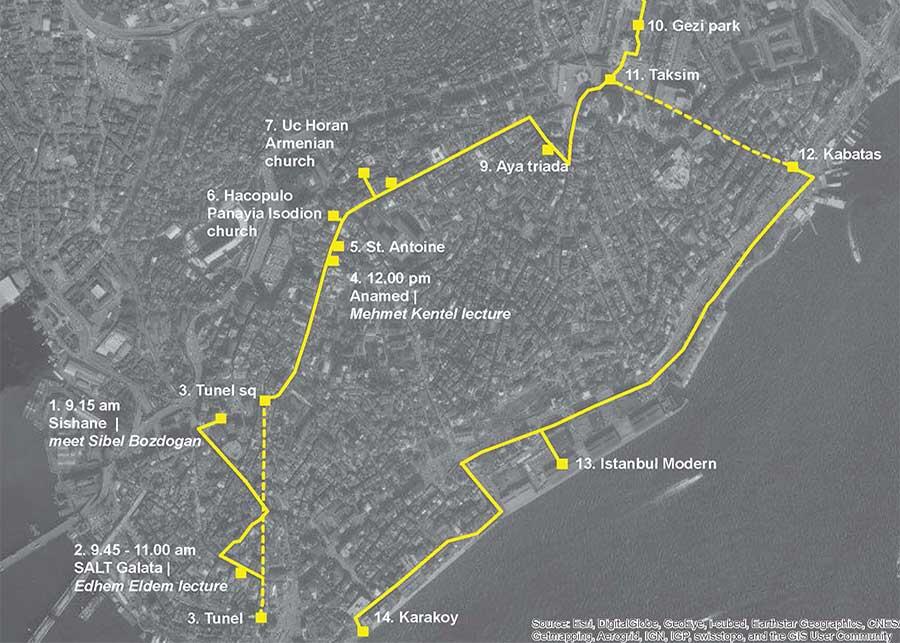
Our day began at SALT, a not-for-profit cultural institution, research center and archive located in the former Imperial Ottoman Bank. There Edhem Eldem of Boğaziçi University gave a highly apropos lecture on the historical thoroughfare of Ottoman banking (the very street we overlooked), Bankalar Caddesi. Eldem also provided an urban history of surrounding Galata-Pera, and offered a corrective to the notion of fixed European and Muslim zones of the city, painting a picture of constant integration, segregation and motion. We, then, trekked toward Taksim Square, the hub and social lightning-rod of modern Istanbul.
Evidence of the impending parliamentary elections was ever present, and as we walked from one architectural site and lecture stop to another, the air crackled with an emotive electricity: our diverse spread of speakers, guides, peers and friends could not help but convey the high societal stakes of the upcoming poll. This gravitas lingered over Taksim perhaps more than anywhere.
In the afternoon, we were introduced to Koç University’s Research Center for Anatolian Civilizations (for some of us, it was a happy homecoming!), located in the heart of Istanbul along Istiklal Caddesi. The Center happened to host an exhibition on Ottoman early photography, curated by none other than our host Edhem Eldem. Koç Fellow Mehmet Kentel briefed us on his work with Galata-Pera’s cemeteries, using demographic data to further problematize the easy narrative of European enclaves and urban stasis that Eldem had warned against. He also introduced his exploration of the surrounding, supporting agricultural areas of greater Istanbul during the late Ottoman era – and we would return to the importance of these extra-urban zones, to the city’s present and future as well as the study of its past, throughout the trip.

